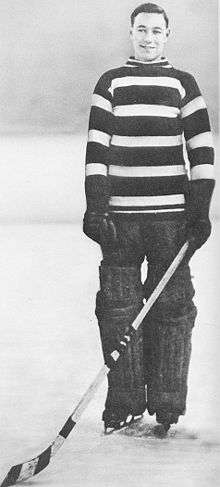Goals against average

Goals Against Average (GAA) is a statistic used in field hockey, ice hockey, lacrosse, soccer and water polo that is the mean of goals allowed per game by a goaltender. GAA is analogous to a baseball pitcher's earned run average (ERA). In Japanese, the same translation (防御率) is used for both GAA and ERA, because of this.
For ice hockey, it is calculated per game by dividing the number of goals against by the number of minutes played in the game then multiplied by 60. For a season, divide the total number of goals against by the result of the total number of minutes played (also known as time on ice) multiplied by 60. Alternatively, take the number of goals against, multiply that by 60 minutes and then divide by the amount of minutes played.[1] When calculating GAA, overtime goals and time on ice are included, whereas empty net and shootout goals are not.[2] It is typically given to two decimal places.
The top goaltenders in the National Hockey League currently have a GAA of about 1.85-2.10, although the measure of a good GAA changes as different playing styles come and go. The top goaltenders in the National Lacrosse League however, currently have a GAA of about 10.00, and the top 2005 Western Lacrosse Association goaltenders had a GAA of about 9.00. At their best, elite NCAA water polo goalies have a GAA between 3.00 and 5.00.
Since the statistic is highly dependent on the team playing in front of a goalie, save percentage is usually considered a more accurate measure of a goaltender's skill, especially in ice hockey and lacrosse, as it takes into account the number of shots the goaltender has faced. In soccer, since it is considered a part of the goalkeeper's job to coach defenders on proper positioning to prevent opponents' shots, GAA is more commonly used to evaluate goalkeepers than save percentage.
References
- ↑ Fitzpatrick, Jamie. "How are Goaltending Statistics Calculated?". Retrieved June 11, 2010.
- ↑ "NHL 2009-10 Rule Book". National Hockey League. Retrieved July 20, 2010.